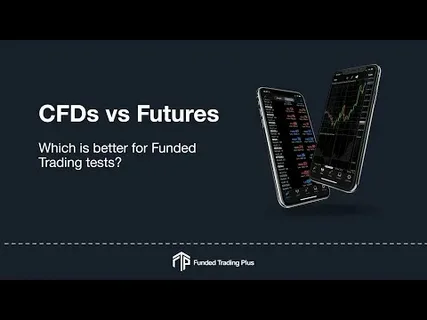Speed is crucial to the futures trading business in prop firm environments; it’s not a nice-to-have feature. Any seasoned, funded trader will let you know directly that several seconds of lag can be the difference between securing a profitable trade and your account balance being destroyed. Prop firm laws usually put a high value on added pressure with drastic drawdown limits and performance targets, and futures markets are very quick. With each professional futures trader, platform speed—execution time, order routing efficiency, and data feed integrity—is therefore of the highest priority. Let’s discuss why platform speed matters so much when you’re trading futures with a prop firm, how delays can impact your ability to pass challenges or stay funded, and what traders should know when choosing a platform.
The Prop Firm World: How Every Millisecond Matters
Prop companies are different from other brokerage accounts. If you wish to remain in the game, you need to abide by their rules, which feature daily drawdowns, consistency expectations, and profit targets. That means that you don’t have much room for maneuver. Slippage is essentially trading suicide in futures, where price action can occur instantly.
Suppose you are scalping the E-mini S&P 500 at the market open. You have a two-second lag on your order after you put in a buy after viewing a setup. The price changes two ticks in that short span of time. You’re riding with the motion instead of getting into your identified level. Your risk-to-reward ratio is off, and what could have been a profitable trade now becomes a loser.
That’s the bitter reality: platform speed doesn’t just affect convenience; it actually impacts how easily you can stay on schedule and stay within prop firm rules.
Analyzing Platform Speed
What do we mean by the best futures trading platform speed? It isn’t an individual factor—it’s a collection of things:
- Execution Speed – How quickly your order goes from your click to the exchange. A fast platform does it in milliseconds. A slow one? You’re behind.”.
- Order Routing – Some platforms send orders directly to the exchange (direct market access), while others take the long way around through several servers. Guess who’s faster?
- Data Feed Speed – If your chart data is delayed or laggy, you’re already trading yesterday’s news. Real-time tick data is essential, especially for scalpers.
- Platform Stability – Having speed if your platform hangs at the worst possible moment is pointless. Stability and uptime accompany each other with execution.
Prop Firm Challenges and Speed
This is where it matters even more. Most prop firms put traders through a test before giving them funded accounts. These tests aim to test discipline, consistency, and profitability. But even if you are a good trader, a slow platform can ruin your chances. Daily Drawdown Pressure: If slippage kills your trades, you might hit your highest daily loss limit sooner than you know.
Profit Target Challenge: Delays can keep you perpetually a few ticks behind. It adds up over time, moving your challenge target out of reach.
Missed Entries/Exits: Futures markets will generally give you small windows to play. If your platform is sluggish, the windows close before you can enter them.
Real-Life Situations: How Slow Speed Harms Traders
- Slippage in volatile markets: Suppose you are trading crude oil during an OPEC announcement. You notice a breakout, enter a market order, but the entry is lagged by even a half a second. Before you get in, the market has moved ten ticks. Now your stop loss is sitting much closer than you wanted.
- Missed stop-losses: A laggy platform might not execute your stop-loss quickly enough. Instead of being out at a manageable loss, you’re staring at a blown account.
- Overtrading due to frustration: Slow platforms create frustration. Traders end up forcing trades, clicking multiple times, or abandoning discipline—all of which prop firms hate to see.
Why Speed Matters Even More for Beginners
If you’re just getting started—dabbling in futures trading for beginners—speed can feel like a “big league” problem, something only high-frequency traders need to worry about. But beginners need speed just as much as pros.
Consider it: new traders are already struggling with high learning curves—market structure, risk management, trading psychology. The last thing they want is a platform that introduces another level of complexity.
A fast, stable platform benefits newbies:
- Gains confidence by watching trades perform as they intended.
- Learn market timing free of distortion from lag.
- Remains within prop firm guidelines without concerns about technical issues.
It’s driving lessons. If the brakes are sluggish, you’ll crash, no matter how sharp you are.
How Best Prop Firms for Futures Manage Platform Speed
Not all prop firms are equal and best prop firms for futures recognize how important technology is. They don’t simply dump traders on just any old platform—they spend money on infrastructure that’s built to perform.
Some of the things top shops do:
Integrate with high-speed platforms such as NinjaTrader, Tradovate, Rithmic, or TT that have speed in mind when designing.
Provide low-latency data feeds that update charts and DOM (Depth of Market) to the tick.
Offer server-side execution so orders won’t depend on your home connection.
Grant traders VPS hosting access, bringing your platform nearer to exchange servers.


